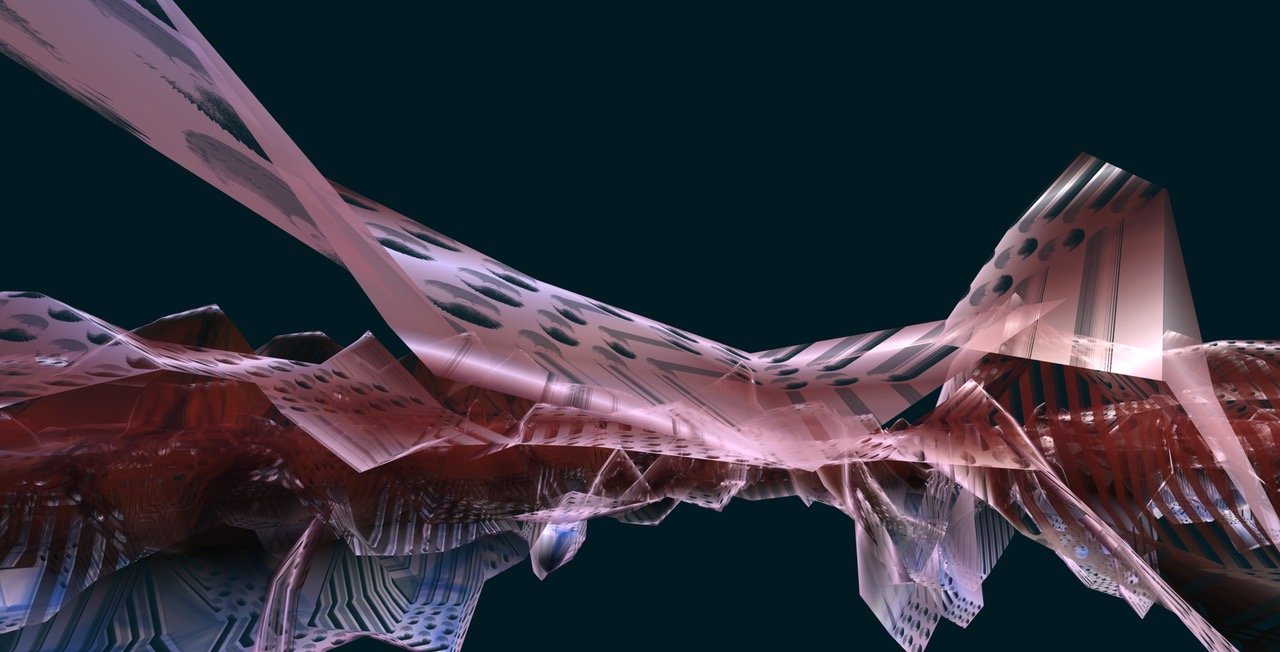
Roman Lipski – Quantum Babylon
National Museum in Szczecin – Museum of Contemporary Art
27.06.–14.09.2025
Roman Lipski returns to the National Museum in Szczecin (NMS) with Quantum Babylon, an immersive exhibition of new work created using quantum computing (QC) technologies. This show marks a new stage in the Berlin-based artist’s evolving practice. Combining video, sound, and sculptural elements, the installation, opening in June 2025, offers a glimpse into what is possible in contemporary art through tools associated with the Fourth Industrial Revolution (4IR) — and perhaps already gestures beyond it.
Following his 2014 solo show at NMS, simply titled Painting, Lipski has embraced technologies that increasingly define our time. Moving beyond the neo-romantic landscapes that brought him early acclaim, he has used tools from AI, GANs, and virtual reality to fundamentally expand his practice. These creative decisions have positioned Lipski as one of the leading voices internationally working at the intersection of art and advanced technologies.
Fascinated by their transformative potential, Lipski set aside his easel to explore the creative possibilities of machine learning and AI. With these systems, he produced abstract works that became the basis for immersive, navigable environments in VR exhibitions.
Now, he takes another step: working not only with technology, but through it — treating it as a co-creative partner. Quantum Babylon explores the potential of quantum computing, a radically different form of information processing still in its early development. While often framed as part of the 4IR, quantum technologies suggest a new paradigm altogether: one that challenges binary logic, linear causality, and our conventional sense of time and space.
At the heart of the exhibition stands a metaphorical reconstruction of the biblical Tower of Babel — a symbol of both utopia and collapse, of cooperation and confusion. It gestures toward the promises of a global technological language, and at the same time warns of new divides in a worldwide race for quantum supremacy.
The title Babylon stems from the Akkadian Bab-ilani, meaning “gate of the gods.” As humanity crosses new thresholds in computation and artificial cognition, Lipski invites us to consider what lies beyond: new modes of understanding, new forms of artistic expression — and new ethical responsibilities.
In this installation, hand-drawn works are transformed via custom quantum algorithms into dynamic digital environments — from floating imaginary landscapes to fragmented urban dreams. A looped projection displays fragments of abstract, cryptic symbols — a reference to a future language that may yet be needed to communicate with quantum machines.
Alongside the audiovisual experience, tactile and sensorial elements anchor the exhibition. Viewers are invited to sit or recline on handwoven carpets, made from sheep’s wool, whose patterns were generated algorithmically.
In this way, Lipski’s journey comes full circle: from easel painting to AI, to quantum code, and back to tangible material. Quantum Babylon is not only an exploration of emerging technologies, but also a reflection on human agency, creativity, and responsibility in an age where the boundaries between science, art, and life are increasingly fluid.
The preview on 26 June 2025 will begin at 5:00 pm with a welcome by:
Marlena Chibowska-Butler, Curator, Museum of Contemporary Art, Department of the National Museum in Szczecin
Roman Lipski, Artist and
Birgit Ostermeier, Exhibition Curator, Director, Atelier Roman Lipski

